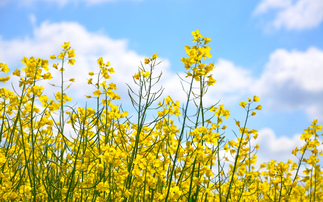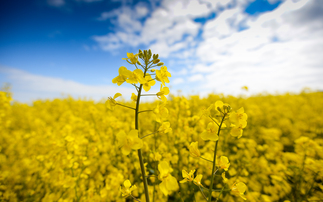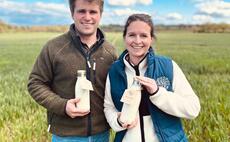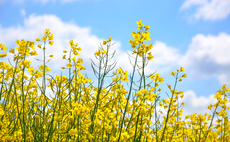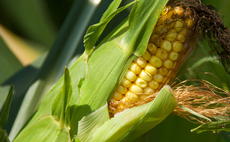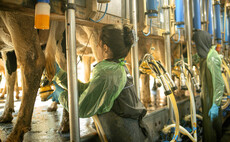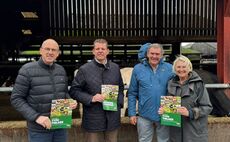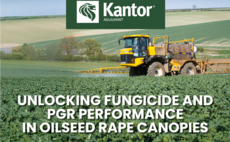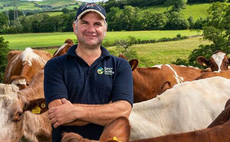
OSR growers at the latest Syngenta iOSR group meeting highlighted their commitment to their most profitable break crop, but reinforced the need for a better understanding of establishment to achieve more consistent results.
Oilseed rape has to fit in with existing establishment systems for most farms.
However, Syngenta technical manager Dr Max Newbert reported the Syngenta trials on the iOSR Focus Site and within the company's pioneering Conservation Agriculture and Sustainable Farming Project have shown light-till style establishment can be an effective route.
He said: "Two factors where direct drilling appears particularly effective have been the retention of moisture in a dry season, and a significant reduction in competitive weeds, particularly charlock, which can be a serious issue in some fields with conventional ploughbased establishment."
In the Conservation Ag project, on two farms with contrasting heavy versus light For more on this series, visit the iOSR hub at fginsight.com/iosr-hub Follow the discussion: #iOSR soil types monitored through a full five-year crop rotation, the light-till (<5cm cultivation) system has achieved a 15% increase (+0.5 tonnes per hectare) in OSR yields over the first two full years, compared to the plough.
It has also delivered marginally better yield than min-till, he reported.
The research has shown initial OSR rooting can be greater in min-till systems, but further trials over the duration of the project will evaluate if improved structure, organic matter and soil health with the direct drill will bring long-term benefits.
This research is positive for growers considering moving down the direct drilling route, and will show whether the technique could be equally successful for future oilseed rape .
Encouraging predators
Another key factor for the use of direct drilling is to preserve populations of predatory insects in the soil surface trash and stubbles, Dr Newbert believes.
Reduced tillage retains surface trash and conditions for predatory spiders, beetles and parasitic wasps, which can target adult cabbage stem flea beetle (CSFB), as well as consuming CSFB eggs and predation of larvae.
With direct drilling, he advocates leaving longer stubble when combining the preceding cereal crop, which creates a more favourable habitat for important predatory spiders casting webs and catching significant numbers of .
The principle would be equally applicable for Autocast established OSR, he added.
Dr Newbert urges growers and agronomists to assess the level of predatory insect activity in the crop, before making a pyrethroid application in autumn (See Overcoming resistance).
Recover
Studies have shown it typically takes 21 days for populations of spiders and other beneficial predators to recover from an application of a pyrethroid spray.
There is also some new evidence of fungi and bacteria which can particularly affect early larval stages of CSFB, encouraged by direct drilling or very light tillage.
Big Seed Kick
Whatever establishment system is used for OSR, the size of seed drilled could have a significant influence on emergence and , believes Dr Newbert.
A survey of iOSR growers has shown the TSW of seed has varied from 4.2g to more than 10g.
While all growers indicated they would prefer larger seed, even if that involved higher cost, few would change selected varieties or suppliers to obtain it.
Dr Newbert says: "Larger seed size gives the energy reserves for seedlings to put down roots, improving the chance of reaching moisture in dry conditions.
That could also help seedlings recover from initial CSFB feeding damage." He also pointed out larger seed typically germinated and emerged more consistently, particularly in difficult conditions.
That is important, since more plants emerging tends to mean CSFB activity is distributed across a wider population and give a greater chance of survival.
This season, the iOSR initiative is looking to evaluate the effect of seed size on the speed and success of crop establishment.
Separating different seed sizes from a sample of farm-saved seed, then growing in a controlled environment at Syngenta's Jealott's Hill International Research Centre will assess the comparable speed of germination and emergence, through growth stages to four true leaves.
There will be the chance to repeat the test under soil moisture stress conditions at 75%, 50% and 25% of optimum moisture.
Findings of the research could help iOSR growers determine the value of seeking larger seed sizes to better cope with difficult conditions and CSFB damage.
Seed treatments which could protect roots from soil pathogen damage also have potential to help crops establish faster and grow away from early beetle feeding.
Overcoming Resistance
Recent results monitoring CSFB populations indicate around twothirds of populations are resistant to pyrethroid treatments.
The issue has now been identified across the UK.
Furthermore, as the oilseed rape area has declined in recent seasons, the high numbers of beetles have been concentrated onto a smaller area each year, resulting in greater levels of losses.
Where growers plant a similar or larger area, it could help dilute effects of beetle feeding.
The Insecticides Resistance Action Group (IRAG) has identified pyrethroids will provide poor control where resistance frequency is high.
It recommends that where resistance has previously been identified the use of a pyrethroid could be counterproductive, with little or no impact on the beetles and reducing the numbers of beneficial predators.
Where treatments achieve suboptimal control with no other reason, such as compromised application, then growers should assume they have a resistant population and make no further applications.
Dr Newbert reported Syngenta was undertaking trials for potential registration of a new insecticide targeted at controlling over winter larvae activity in OSR plants.
Growers would still face the challenge of getting the plants established, however, control of larvae damage could help protect the crop's yields, as well as reduce the pressure of adult beetles on OSR in the future.
At least two years of further registration trials would be required to evaluate the techniques, he added.



Crushing Future
The UK needs to grow a significant area of oilseed rape to maintain the country's existing crush capacity.
Nathan Duncan, OSR trading specialist with Glencore UK notes the four primary crushing facilities currently demand about two million tonnes a year.
However, domestic rapeseed supply will fall to about 1.1mt, and is predicted to drop as low as 900,000t for harvest 2021 with the balance from imports.
Any reduction in the UK crush capacity would have an implication for farm prices.
Currently values match the cost of crushers importing from global production but, without the crush capacity, farm prices may have to fall to meet parity with export values.
If the UK was unable to grow OSR economically and was forced to be more reliant on imports of seed, it would have a political dimension, with food security very much a current hot topic, as well as a hugely negative balance of payments trade effect.
More from iOSR

For more on iOSR click here:





